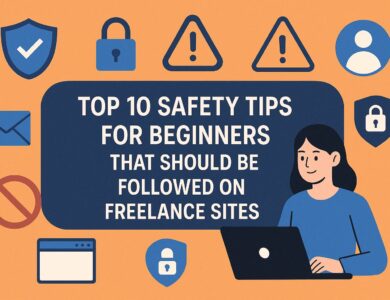
In today’s digital landscape, investing in search engine optimization (SEO) is essential for businesses looking to increase their visibility and reach online. While SEO can sometimes seem complex, understanding how search engines determine rankings and identifying low-hanging fruit can help you make small changes that yield significant results. In this article, we will explore the importance of investing in SEO, how search engines work, and strategies for identifying and capitalizing on low-hanging fruit opportunities.
Why Invest in SEO?
In the digital age, visibility is paramount. The internet has become the modern-day marketplace, and if you’re not visible to your potential customers, you’re missing out on endless opportunities. This is where Search Engine Optimization, or SEO, comes into play. SEO is the process of optimizing a website so that it appears higher on search engine results pages (SERPs), thus drawing more organic (unpaid) traffic. Here are compelling reasons why you should invest in SEO for your business:
- Increased Visibility: SEO helps your website appear higher in search engine results pages (SERPs), increasing your visibility to potential customers. The higher your website ranks, the more likely users are to click on your website and engage with your content.
- Targeted Traffic: SEO allows you to attract highly targeted traffic to your website. By optimizing your content for specific keywords, you can reach users who are actively searching for products or services related to your business.
- Brand Authority: A strong SEO strategy helps establish your brand as an authority in your industry. When your website consistently ranks high in search results, users perceive your brand as trustworthy and reliable.
- Long-Term Results: Unlike other forms of digital marketing, SEO provides long-term results. Once you optimize your website and content, they will continue to drive organic traffic and generate leads over time.
How Search Engines Determine Rankings
To understand the impact of small SEO changes, it’s essential to have a basic understanding of how search engines like Google determine rankings. While search engines use complex algorithms, the process can be simplified into a few key steps:
- Crawling: Search engines use bots, also known as spiders or crawlers, to explore the internet and discover web pages. These bots follow links from one page to another, collecting information about each page they encounter.
- Indexing: After crawling a webpage, search engines index the page’s content. Indexing involves analyzing the page’s text, images, and other elements to understand its relevance and value.
- Algorithms: Search engines use complex algorithms to determine the relevance and authority of indexed pages for a given search query. These algorithms consider various factors, called ranking signals, to decide the order in which pages will appear.
- Ranking & Ranking Signals: Search engines can use hundreds of ranking signals (also known as Ranking Factors). Some of the most significant ones include:
-
- Content Quality: How relevant, comprehensive, and useful content is for a specific search query.
- Backlinks: The number and quality of other websites that link to a page, suggesting its authority and credibility.
- Mobile Usability: How well a site performs on mobile devices.
- Page Speed: How quickly a webpage loads, affecting user experience.
- Secure and Accessible Website: Using HTTPS and having a site that’s easy to crawl play a role in rankings.
- User Experience: Metrics like click-through rate (CTR), bounce rate, and dwell time provide insights into how users interact with a site.
When a user performs a search query, search engines retrieve relevant web pages from their index and rank them based on these ranking signals.
Search Intent: Recent updates to Google’s algorithms emphasize understanding the user’s intent behind a search query. It’s not just about matching keywords but delivering content that meets the user’s needs.
Personalization:
- Search engines also tailor results based on individual factors like:
- Search History – Previous searches can influence future search results.
- Location – Local businesses or relevant content may be prioritized based on the searcher’s location.
Updates and Changes:
Search engine algorithms aren’t static so consult an SEO Agency if you’re feeling stuck. They’re continuously updated to provide better results and adapt to new technologies and trends. Google, for instance, rolls out major and minor updates, sometimes altering rankings and necessitating changes in SEO strategies.
Moreover, today we are seeing search engines increasingly use machine learning and AI to improve their results. For instance, Google’s RankBrain, an AI-driven component, interprets complex or ambiguous queries, helping the algorithm to serve the most relevant content.
On-Page Optimization: Making Small Changes Count
On-page optimization involves optimizing individual web pages to improve their search engine rankings and organic traffic. While it may seem like a small task, on-page optimization can have a significant impact on your SEO efforts. Here are a few key on-page optimization techniques:
- Title Tags and Meta Descriptions: Craft compelling and keyword-rich title tags and meta descriptions for each web page. These elements appear in search results and play a crucial role in attracting users to click on your website.
- URL Structure: Optimize your URL structure by creating a logical hierarchy that helps search engines understand the organization of your website. Use categorical structures and configure your permalinks properly to ensure clear and concise URLs.
- Content Optimization: Create high-quality, informative, and engaging content that aligns with your target keywords. Incorporate keywords naturally into your headings, subheadings, and body text to improve relevance and visibility.
- Internal Linking: Use relevant anchor text to link internally between your web pages. Internal links help search engines understand the relationships between your content and improve user navigation.
By making small changes to your on-page elements, you can improve the visibility and relevance of your web pages, attracting more organic traffic and boosting your rankings.
In the realm of SEO, many believe that massive overhauls are the key to climbing the search engine results pages. However, that’s not always the case. The beauty of SEO is that it’s often the subtle tweaks and small modifications that lead to the most significant impacts over time. Just as a steady drip can fill a bucket, consistent and incremental SEO changes can culminate in substantial results.
For instance, consider the simple act of updating older content on your website. By refining a few headers, adding relevant keywords, or incorporating updated data, you can breathe new life into a page, signaling to search engines that the content is current and valuable. Similarly, minor adjustments to meta descriptions or title tags can significantly enhance click-through rates from search engine results pages, driving more organic traffic to your site.
Moreover, SEO isn’t just about content and keywords; it encompasses user experience as well. Small changes, like optimizing images to load faster or making sure your website is mobile-friendly, can drastically improve user engagement metrics. Over time, these enhancements signal to search engines that your site is user-friendly, pushing it higher in rankings.
In essence, while comprehensive SEO strategies have their place, it’s essential not to underestimate the compound effect of small, consistent changes. They not only optimize your site gradually but also ensure it’s always aligned with the ever-evolving search engine algorithms. In the SEO journey, every little step, no matter how minor, moves you closer to your desired destination.
Being a Big Fish in a Small Pond
In the vast ocean of the digital world, it’s easy to feel lost amidst the giants. Everyone seems to be vying for those coveted high-volume keywords, making competition fierce. But what if there’s another way? What if, instead of trying to conquer the entire ocean, you focus on being the big fish in a smaller pond? This strategy is all about leveraging keyword research to identify niches where you can easily dominate. Let’s dive in.
The Lure of High-Volume Keywords
It’s understandable to be drawn to high-volume keywords. These are terms that get thousands, if not millions, of searches every month. Ranking for such terms can bring an influx of traffic, boosting visibility and potentially sales. However, the competition for these keywords is often steep. Large corporations with massive SEO budgets dominate the ranks, making it challenging for smaller players to break through.
The Power of the Niche
On the other hand, niche keywords, often referred to as “long-tail keywords”, might have lower search volumes but are typically far less competitive. These keywords are more specific, targeting particular audiences or topics. For instance, instead of targeting “shoes”, you might aim for “vegan leather women’s hiking boots”. While the audience size is smaller, they’re more targeted, meaning higher chances of conversion.
The Magic of Keyword Research
Keyword research isn’t just about finding popular terms. It’s about understanding your audience, their needs, and how they search for solutions. Here’s how to do it effectively:
- Use Tools Wisely: Utilize tools like Google Keyword Planner, SEMrush, or Ahrefs to discover keyword opportunities. Look beyond the search volume. Check for keyword difficulty or competitiveness.
- Analyze User Intent: Understand why users might be searching for a particular term. Are they looking to buy, seeking information, or trying to solve a problem? This insight can help shape your content strategy.
- Spy on Your Competitors: See which keywords your competitors are ranking for. Are there gaps in their strategy that you can exploit?
Reaping the Benefits of Being the Big Fish
When you focus on niche keywords, you set yourself up for several advantages:
- Higher Conversion Rates: Because long-tail keywords are more specific, visitors coming through them are often further down the purchase funnel and more likely to convert.
- Increased Visibility: With less competition, it’s easier to rank higher on search engine results pages, ensuring more visibility for your content.
- Established Authority: Dominating a niche can help you establish authority in that area. Over time, this can lead to increased trust and credibility among your audience.
- Cost-Efficiency: For those dabbling in paid search, long-tail keywords often have a lower cost-per-click, ensuring better ROI.
The Bigger Picture
It’s essential to remember that SEO is a marathon, not a sprint. While it’s beneficial to target and dominate niche keywords, it doesn’t mean you should ignore broader terms altogether. The ideal strategy blends both, ensuring short-term wins while also setting sights on long-term goals.
The Complexity of SEO
SEO can sometimes be complex, requiring technical expertise and ongoing optimization efforts. However, by breaking it down into smaller, manageable tasks, you can identify low-hanging fruit opportunities that offer significant impact with minimal effort. Let’s explore how you can navigate the complexities of SEO and find those easier wins.
Research: Identifying Low-Hanging Fruit
Keyword research is a fundamental aspect of SEO. By identifying the right keywords, you can target specific search queries and attract relevant traffic to your website. Here’s how you can identify low-hanging fruit keywords:
- Long-Tail Keywords: Long-tail keywords are more specific search queries that usually have lower competition. By targeting these keywords, you can reach users who are further along in their buying journey and have a higher intent to convert.
- Low-Volume Keywords: While high-volume keywords may seem attractive, they often come with intense competition. Instead, consider targeting low-volume keywords that are relevant to your business but have less competition. These keywords can yield quicker wins and improve your rankings.
- Local Keywords: If your business operates in a specific geographic area, focus on optimizing for local keywords. This allows you to target users who are searching for products or services in your location, increasing your chances of conversion.
By conducting thorough keyword research and identifying low-hanging fruit opportunities, you can optimize your website and content for keywords that offer easier wins.
Conclusion
In the realm of digital optimization, it’s a common misconception that grand gestures and sweeping changes are the primary catalysts for success. However, the truth lies in the nuanced intricacies. Small, consistent SEO adjustments, executed with precision, can culminate in significant, transformative results. Even minor tweaks can push a brand towards digital prominence, underscoring that the mastery of SEO is less about the sheer scale of changes and more about their impactful depth. If the path seems overwhelming, seeking insights from a trusted SEO Agency can illuminate the way, ensuring that even the subtlest shifts can lead to monumental success in the digital landscape.







